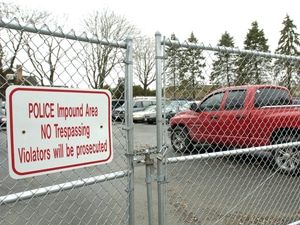 Most of us have received a speeding ticket in our years of driving, and if not, I’m sure that every one of us has exceeded the speed limit at one time or another, even if it was accidental, and only for a few seconds. It seems that most of the accidents of that era were blamed on excessive speed. In the 1900s, the Mercedes-Simplex 60HP could reach a maximum speed of 73 miles per hour. By 1920, the Duesenberg Model J could reach speeds of 119 miles per hour. Of course, we have vehicles today that can reach much higher speeds…such as the Koenigsegg Agera RS that has a maximum speed of 278. We have come a long way from the days of the Horse Carriage that had a maximum speed of 30 miles per hour, but in 1900, we had no speed limit. The maximum speed of the car was the acceptable speed limit, whether the driver could control the vehicle at that speed or not. How many people do you know who have good control of a vehicle at 119 miles per hour? Most people couldn’t honestly claim to be in control at that speed.
Most of us have received a speeding ticket in our years of driving, and if not, I’m sure that every one of us has exceeded the speed limit at one time or another, even if it was accidental, and only for a few seconds. It seems that most of the accidents of that era were blamed on excessive speed. In the 1900s, the Mercedes-Simplex 60HP could reach a maximum speed of 73 miles per hour. By 1920, the Duesenberg Model J could reach speeds of 119 miles per hour. Of course, we have vehicles today that can reach much higher speeds…such as the Koenigsegg Agera RS that has a maximum speed of 278. We have come a long way from the days of the Horse Carriage that had a maximum speed of 30 miles per hour, but in 1900, we had no speed limit. The maximum speed of the car was the acceptable speed limit, whether the driver could control the vehicle at that speed or not. How many people do you know who have good control of a vehicle at 119 miles per hour? Most people couldn’t honestly claim to be in control at that speed.

Speed restrictions, and laws against speeding weren’t new on August 28, 1923. The first law regarding automobile speeds actually too effect on May 21, 1901 in Connecticut. The law required that vehicles limit their speed in cities to 12 miles per hour, and 15 miles per hour on country roads. In 1899, a cab driver named Jacob German had been arrested for driving his electric taxi at a speed of 12 miles per hour. It was thought that a more prudent speed would have been 8 miles per hour. Representative Robert Woodruff wanted to make a law, and he suggested 8 miles per hour on city streets and 12 on country roads. In the end the speeds were changed to 12 miles per hour on city streets and 15 miles per hour on country roads. While those speeds seem like crawling to the drivers of today, I suppose they seemed fast then.
 Still, drivers were as unwilling to abide by the speed regulations of that day, as they are today. Then, it was decided to make a law that would be a true deterrent to speeders. It was a strict law…too strict, in fact, but they had to try. The law allowed the magistrates…police, to put the car in a storage lot for periods of time depending on the severity of the speeding offence and if the motorist is a repeat offender. Also, due to the increases in incidents, some offenders were sentenced to farm labor. Now, if that wouldn’t deter you from speeding I just don’t know what will. Still, such severity of punishment really would never be accepted for long, as we all know. And of course, that is not a law today…but it was once.
Still, drivers were as unwilling to abide by the speed regulations of that day, as they are today. Then, it was decided to make a law that would be a true deterrent to speeders. It was a strict law…too strict, in fact, but they had to try. The law allowed the magistrates…police, to put the car in a storage lot for periods of time depending on the severity of the speeding offence and if the motorist is a repeat offender. Also, due to the increases in incidents, some offenders were sentenced to farm labor. Now, if that wouldn’t deter you from speeding I just don’t know what will. Still, such severity of punishment really would never be accepted for long, as we all know. And of course, that is not a law today…but it was once.


2 Responses to It Was Once